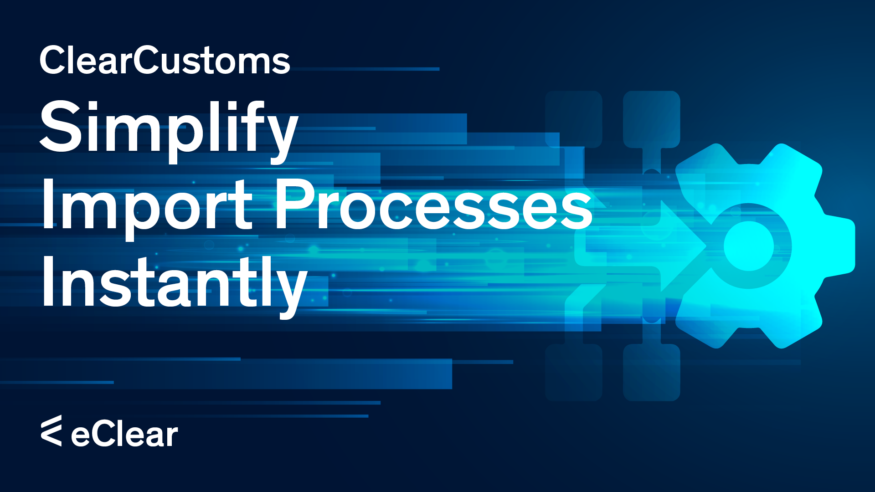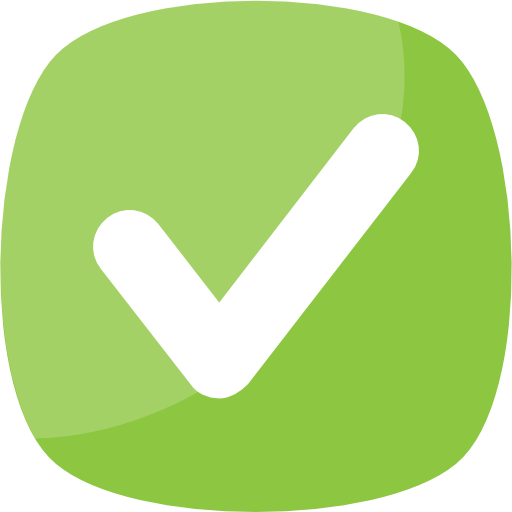- What are the benefits of partnering with ClearCustoms for customs agents? Partnering with ClearCustoms streamlines customs clearance, reduces lead times, enhances compliance, and improves customer satisfaction through advanced technology and seamless integration.
- How does ClearCustoms ensure compliance and efficiency in customs processing? ClearCustoms leverages AI and automation to handle all facets of customs clearance, including documentation, duty calculations, and regulatory compliance, ensuring a smooth and efficient process.
- What innovative features does ClearCustoms offer? ClearCustoms provides fully automated customs clearance, real-time tracking, seamless API integration, and comprehensive transparency from departure to delivery.
Enter ClearCustoms—a partner that transforms these complexities into a streamlined, efficient process. By teaming up with ClearCustoms, businesses can enjoy faster, more compliant customs clearance, boosting operational efficiency and customer satisfaction. ClearCustoms provides a thorough service that handles all facets of customs clearance, making it a perfect partner for non-EU businesses looking to enhance their import operations. With ClearCustoms’ expertise and cutting-edge technology, companies can achieve superior import efficiency and secure a competitive advantage in the European marketplace.
Understanding the Role of a Customs Agent
A customs agent is a licensed professional or firm that plays a pivotal role in importing and exporting goods across international borders. Acting as intermediaries between businesses and government authorities, they ensure shipments comply with all necessary regulations and legal requirements. Their responsibilities include preparing and submitting documentation, calculating duties and taxes, and facilitating communication with customs officials.
Customs agents are indispensable for businesses engaged in international trade, helping navigate the complex maze of customs procedures, minimising delays, and ensuring the smooth movement of goods. Without their expertise, businesses would face significant challenges with customs laws, leading to delays and financial penalties.
Challenges Faced by Customs Agents
Customs agents face numerous challenges in their profession. One major challenge is staying compliant with ever-changing regulations. Each country has its customs laws, requiring agents to update their knowledge continuously.
Managing extensive paperwork is another critical task; accurate and timely documentation is essential for customs clearance, with errors potentially leading to costly delays and fines. Ensuring timely delivery involves coordinating with various stakeholders, including shipping companies, government agencies, and clients. This requires exceptional organisational skills and the ability to manage multiple tasks simultaneously. Balancing these demands while maintaining high levels of accuracy and efficiency is a significant part of the customs agent’s role.
About ClearCustoms
ClearCustoms is a cutting-edge SaaS product designed to revolutionise customs clearance. Part of eClear’s suite of solutions, ClearCustoms leverages advanced technology for unmatched efficiency and reliability. Strategically located in Budapest, Frankfurt, and Leipzig, ClearCustoms is well-positioned to serve clients across Europe. The platform integrates seamlessly with a network of airports and ports, ensuring quick and efficient customs processing and providing a hassle-free experience for non-EU businesses importing into Europe.
Mission and Vision: ClearCustoms is dedicated to simplifying the import process for non-EU businesses. Its mission is to streamline customs clearance into an efficient operation that enhances business performance and customer satisfaction. ClearCustoms envisions a future with minimised international trade barriers, enabling businesses to focus on growth and innovation rather than regulatory challenges. By offering unparalleled speed, efficiency, and compliance, ClearCustoms aims to be the trusted partner for businesses entering and thriving in the European market.
Innovative Features: ClearCustoms addresses common pain points in customs clearance with its innovative features. The fully automated system leverages the Import One-Stop Shop (IOSS) for efficient handling, reducing manual intervention and minimising errors. Seamless API integration allows businesses to integrate ClearCustoms effortlessly into their existing systems, ensuring smooth transitions and uninterrupted operations.
Strategic Locations and Network: With strategic locations in Budapest, Frankfurt, and Leipzig, ClearCustoms taps into major European logistics hubs. This geographical advantage, combined with a robust network of airports and ports, allows for expedited processing and shorter lead times. ClearCustoms’ presence in these key locations ensures efficient handling of high shipment volumes, providing timely customs clearance and delivery.
Commitment to Compliance and Customer Satisfaction: ClearCustoms upholds the highest compliance standards with international trade regulations. Its comprehensive approach ensures all shipments meet regulatory requirements, avoiding delays and penalties. By focusing on compliance and efficiency, ClearCustoms enhances customer satisfaction, making the import process smooth and stress-free for businesses.
Benefits of Partnering with ClearCustoms
Full-Service Customs Clearance: Partnering with ClearCustoms provides businesses with a comprehensive suite of customs clearance services, covering every aspect of the import process. From direct handling and logistics to final delivery, ClearCustoms offers an actual fire-and-forget experience, ensuring that shipments are processed smoothly and efficiently. This all-encompassing service reduces the burden on customs agents and import managers, allowing them to focus on core operations without getting bogged down by regulatory complexities.
Reduced Lead Time: ClearCustoms leverages an extensive network of airports and ports across Europe to expedite the import process, significantly cutting down lead times by a day. Key hubs like Frankfurt and Leipzig streamline logistics and ensure efficient customs clearance protocols. Faster processing times mean goods reach their destinations more quickly, reducing waiting periods for customers and enhancing overall operational efficiency. For businesses, this translates to improved inventory management and the ability to respond rapidly to market demands.
Cash-Free for Consumers: One standout benefit of ClearCustoms is eliminating doorstep payments for imports under EUR 150. This feature enhances customer satisfaction by removing the inconvenience of cash-on-delivery transactions. Consumers can receive their goods directly without additional steps, making the purchasing experience smoother and more enjoyable. This cash-free approach improves customer satisfaction and reduces the risk of payment-related issues that could delay final delivery.
Unmatched Transparency: Transparency is a cornerstone of ClearCustoms’ service. The platform provides real-time tracking and barcode capture for complete shipment visibility from departure to delivery. Businesses can monitor their goods at every stage of the import process, ensuring they are always informed about the status of their shipments. This level of transparency builds customer trust and allows businesses to address any issues during transit proactively. Real-time updates and comprehensive tracking data also enhance supply chain coordination, reducing disruptions and improving reliability.
Key Features of ClearCustoms
Fire-and-Forget Solution: ClearCustoms offers a comprehensive, end-to-end customs clearance service, often described as a “fire-and-forget” solution. Once shipment details are provided, ClearCustoms takes over the entire process, managing everything from airport logistics to customs inspection and last-mile delivery. This includes seamless handling upon arrival at key European airports such as Frankfurt and Leipzig, ensuring efficient customs inspections and quick handover to last-mile carriers. This fully managed service eliminates the need for businesses to coordinate with multiple providers, reducing complexity and boosting operational efficiency.
Fully Automated Customs Clearing Process: A standout feature of ClearCustoms is its fully automated customs clearing process. By leveraging the Import-One-Stop-Shop (IOSS), ClearCustoms ensures that customs handling is efficient and error-free. The IOSS framework simplifies VAT collection for low-value goods imported into the EU, streamlining the process for businesses and consumers. This automation minimises manual intervention, significantly reducing the risk of errors and delays. Consequently, businesses can enjoy faster customs clearance, reduced lead times, and improved overall supply chain efficiency.
API Integration: ClearCustoms excels in seamless API integration, allowing businesses to directly incorporate its customs clearance services into their existing systems. This ensures that operations remain smooth and uninterrupted, without the need for companies to overhaul their current workflows. The API facilitates the automatic transfer of shipment data, enabling real-time updates and efficient handling. This integration is particularly valuable for e-commerce platforms and logistics companies that rely on streamlined processes to maintain high efficiency and customer satisfaction.
Unmatched Transparency and Tracking: ClearCustoms offers unparalleled transparency through real-time tracking and barcode capture, providing complete visibility of shipments from departure to delivery. This feature allows businesses to monitor their goods at every stage of the import process, ensuring they are always informed about shipment status. Real-time updates and comprehensive tracking data enhance supply chain coordination, allowing businesses to promptly address any issues and minimise disruptions. This level of transparency builds trust with customers, as they can track their orders in real-time, leading to higher satisfaction levels
How ClearCustoms Works
Air Cargo Option: ClearCustoms offers a streamlined air cargo option for managing shipments to major European airports, specifically Frankfurt and Leipzig. Upon arrival, ClearCustoms oversees the entire process, coordinating with airport logistics teams to ensure swift unloading and transfer to customs inspection areas. With their robust infrastructure, these key hubs efficiently handle large cargo volumes. Leveraging these strategic locations, ClearCustoms ensures that goods move quickly through the initial stages of the import process, minimising delays and optimising transit times.
Rail Option: Besides air cargo, ClearCustoms utilises the Budapest Rail Cargo system, offering an efficient rail import option. This method is particularly beneficial for businesses seeking cost-effective and reliable transportation. Shipments via rail to Budapest benefit from a well-established network and streamlined processes. ClearCustoms manages logistics from the rail terminal, ensuring goods are efficiently transferred from the train to customs inspection and clearance. The use of rail cargo provides a flexible and scalable option, complementing air cargo services and offering more choices for efficient importation.
Post-Arrival Process: ClearCustoms takes over the post-arrival process with precision once shipments arrive by air or rail. This includes managing airport or rail terminal logistics, ensuring prompt unloading and directing shipments to customs inspection areas. ClearCustoms’ expertise in customs inspections ensures all regulatory requirements are met efficiently, preventing unnecessary delays. After inspections, ClearCustoms handles the clearance process, verifies documentation, and calculates duties and taxes. This meticulous approach ensures compliance and facilitates smooth shipment progression through the import process.
Handover for Final Delivery: ClearCustoms coordinates the handover of shipments to trusted courier services for final delivery to consumers after clearing customs. This seamless and efficient handover process ensures goods reach their final destination promptly. Partnering with reliable courier services, ClearCustoms maintains high delivery performance standards, ensuring customer satisfaction. The final delivery phase is critical for maintaining supply chain integrity, and ClearCustoms’ thorough management up to this point guarantees shipments are delivered on time and in perfect condition.
Don’t let customs clearance complexities slow down your business
Partner with ClearCustoms to streamline your import processes, reduce lead times, and improve customer satisfaction. Connect with ClearCustoms today to discover how their innovative solutions can redefine your European import strategy. Experience the benefits of a simplified, efficient, transparent customs clearance process supporting your business growth and success.
Let’s stay in touch!
Stay up to date on the latest market trends, best practices and regulatory changes affecting cross-border trade by following us on LinkedIn.








